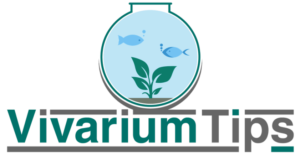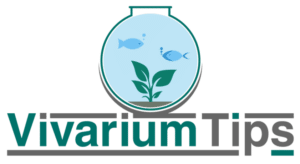Jarrariums are also known as self-sustaining ecosystems. In essence, they are micro-aquariums made from some household materials and include plants and some aquatic organisms. They let you observe aquatic life from up-close.
There are two kinds of jarrariums – open jarrarium and closed jarrarium. When you’re wondering what is a sealed jarrarium, a sealed jarrarium belongs in the closed jarrarium side.
A sealed jarrarium (also closed jarrarium) is known as a self-sustaining ecosystem, which usually requires less maintenance than an open jarrarium.
You may say that they are mini-ecosystems trapped inside a jar or even a small fishbowl. Jarrariums can also be sealed or unsealed. Additionally, they can be self-sustaining with little care required from your side.
If you’re looking to build a jarrarium, check out this guide on “How To Make A Jarrarium In 11 Easy Steps!”
Types of Jarrariums
Below, you can find the types of jarrariums you can build at home. While there are open jarrariums, these might also interest you:
- Mostly water jarrarium
- Pond type jarrarium
- sealed jarrarium
Mostly Water
You can make jarrariums that have aquatic animals and plants. These types of jarrariums are 85 to 90% water. They are also open jarrariums. You will need to change the water in these types of enclosures to keep them clean.
You’ll also need to feed the organisms you’ve kept in them.
Pond Type Jarrarium
The other types of jarrariums have less than 30% of water. They appear like ponds with a few organisms and plants. Moreover, they are also open jarrariums.
You’ll often have to water the plants whenever needed.
Since they are ponds, you’ll need to look out for dead animals infesting snails and any plants growing out of the enclosure.
You’ll need to maintain them; otherwise, they may begin to produce a smell.
Sealed Jarrarium
Then there are sealed jarrariums. They are pretty much self-sufficient too. They survive without much care from the owner. The owner balances life in the ecosystem and finds out what works and what doesn’t.
The water can cycle inside the jar through the phenomenon of evaporation and condensation.
As a result, you should not add animals in a sealed jarrarium.
However, if you want to add animals – you can create an open jarrarium.
What Can You Keep in a Sealed Jarrarium?
Since these types of enclosures are sealed, there is not much that you can add to them. They do have a humid environment since they are self-sustaining, and the water cycles through them.
You’ll have to look for plants that can live in moist soil and air.
Do not add succulent plants to your sealed jarrariums because they will not do very well.
There are hundreds of plants that can survive in humidity and humid soil; some of them are as follows:
- Ferns
- Golden clubmoss
- Venus fly trappers
Mini-Guide To Creating a Sealed Jarrarium
Making your own jarrarium is very simple. Just think about what you want in your enclosure, gather the material, and start the assembly. It is quite fun to do too.
- The first thing to do is to take out a jar. The bigger, the better. Choose a jar that closes well if you want a sealed jarrarium.
- Now, gather the substrate to put it into your jar. It could be any type of soil you have selected. It should have a depth of 1 to 1.5 inches so that the plant roots have a place to grow in.
- Now you have to add water to your jar. Do not let the water rise above your substrate. Just let it soak for about 12 hours.
- Now you can add the plants.
- Now add the gravel or sand. It should have a height of 1 inch.
- Fill it with water.
- Let your jar sit for 12 hours. You can now add your decorations but be careful. Let the jar rest for about two weeks; this is called cycling. That’s it. Keep the jar sealed and enjoy your enclosure.
For an in-depth guide, check out: “How To Make A Jarrarium In 11 Easy Steps!”
We created this chart to help give you a better idea of the guide. The guide above will take you further in-depth for your jarrarium build.
| Create A Jarrarium Step-By-Step | |
|---|---|
| Step 1 | Take Out Your Jar / Find Workspace |
| Step 2 | Gather Substrate To Fill Container |
| Step 3 | Sink Your Substrates |
| Step 4 | Add Aquatic Plants |
| Step 5 | Pour Sand or Gravel |
| Step 6 | Fill Up Water |
| Step 7 | Let Your Jar Sit |
| Step 8 | Add Everything Else (Not Animals) |
| Step 9 | Cycling |
| Step 10 | Replace Water |
| Step 11 | Add Animals |
What Is A Sealed Jarrarium: FAQ
In this section, you’ll find common questions related to sealed jarrariums. If you have any questions that are not listed here, feel free to comment below and we’ll get back to you as soon as possible.
What do you do if there are jarrarium algae growing on your plants?
If you noticed that algae are growing on your plants/glass inside of your sealed jarrarium, you can try raising the light and shortening the length of it. It’s difficult to remove algae when it gets on your glass. You can try using a brush to remove it. When you have shorter lighting for your mini-ecosystem, it’ll help reduce the number of algae.
Are there any good jarrarium guides out there?
Yes, there are a couple of great jarrarium guides that we found via search. You can check out our guide “How To Make A Jarrarium In 11 Easy Steps” or check out other recommendations that we found.
Where do I buy plants for my jarrarium?
You can purchase plants for your jarrarium from several community recommendations.
You can even click here and find a list of products useful for your jarrarium build online!
Is there a jarrarium community?
Yes, there is a jarrarium Reddit that you can join to discuss the topic of jarrarium with other enthusiasts! At the time of writing this, there are over 76,000 jarrarium lovers! Here is the jarrarium Reddit.
From VivariumTips,
Sealed jarrariums are beautiful and fun to make. No matter what style you construct it in, you’ll love the final appearance. Keep your jarrarium on a window sill for all the sustenance it might need. Enjoy the mini-ecosystem in the jar.
If you enjoyed this article, we recommend you checking out our in-depth jarrarium guide to help build a better jarrarium!
This simplifies an 11-step guide that’s easy and beginner-friendly!
For any questions, don’t hesitate to comment below and we’ll be right there to help you!

